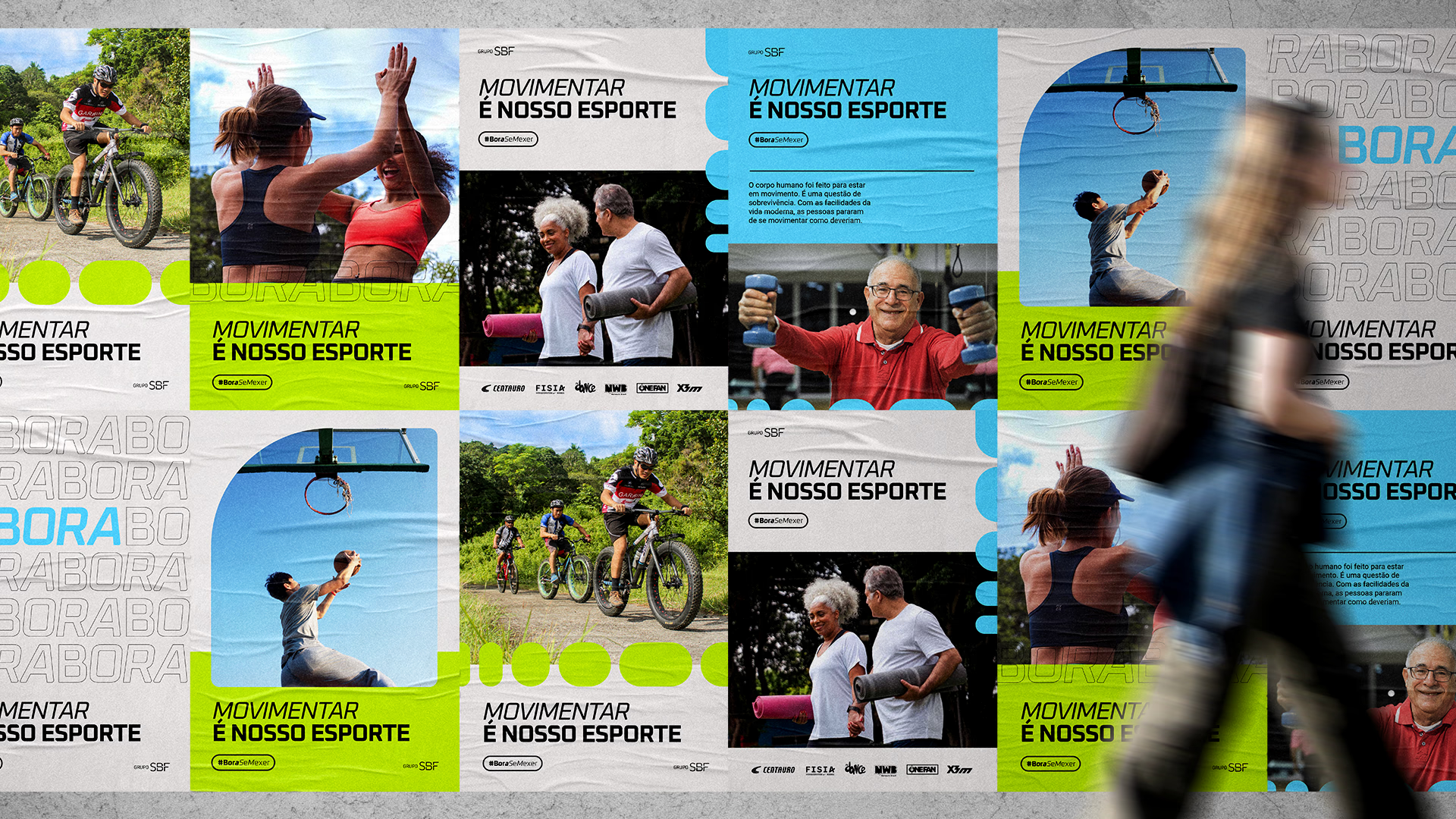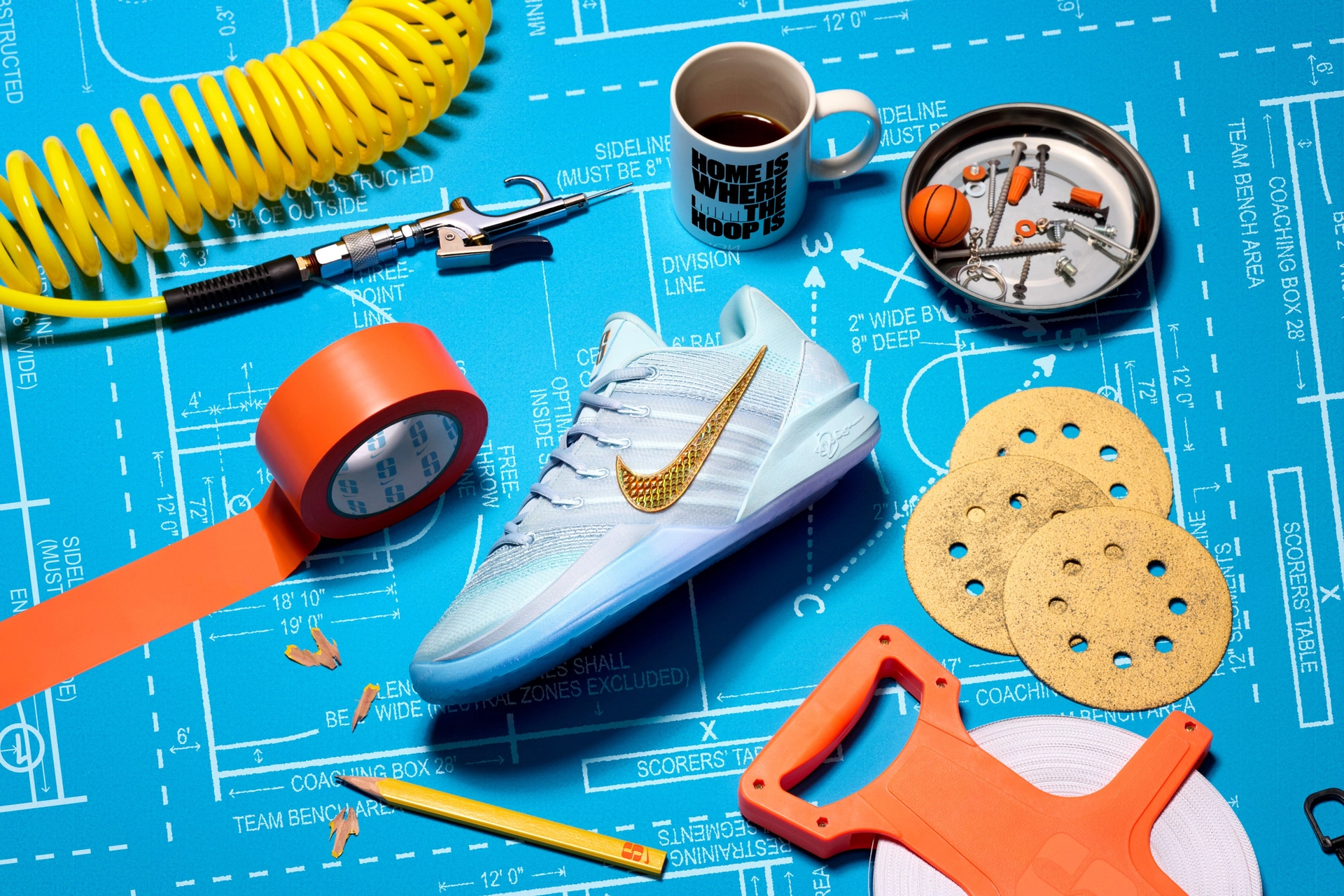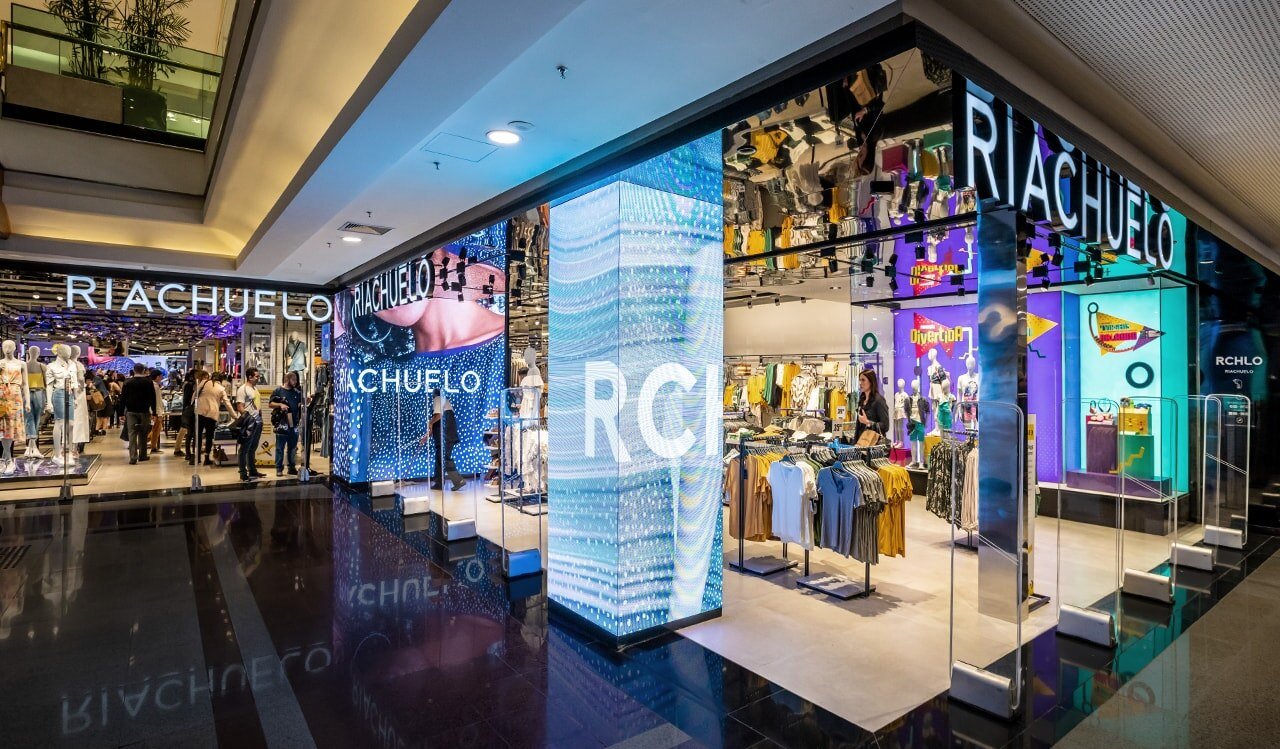
SBF Group
Design Ops Strategy
How might we empower design teams to work with greater alignment, consistency, and recognition so that their impact is clear across the organization?
TL;DR
At Grupo SBF, I led the creation of a strategic Design Ops roadmap that improved team engagement, aligned disciplines under one vision, and provided measurable impact through structured health checks, prioritized initiatives, and cross-functional collaboration.
Context
When I joined Grupo SBF in 2021, our design organization was in a very difficult situation — voluntary turnover was at 86%, our ceremonies had no clear purpose, there was no design career ladder, and the team didn’t have a shared goal. We tried improving these topics as individual leaders, but we knew it was necessary to be accountable for these topics.
In October 2022, I joined Grupo SBF as Design Ops. The design team had just been reorganized, combining six disciplines (Product Design, Content Design, UX Research, Design System, Research Ops, and Design Ops). While this consolidation created potential for synergy, the roadmap was still reactive, focused on urgent fixes like onboarding optimization, Figma Org migration, and documentation.
Problem
Despite early wins, engagement levels dropped. Designers were participating less in critiques and specialty sessions, signaling that underlying issues were deeper than process gaps. The challenge was to move from reactive firefighting to building a forward-looking, scalable structure that improved engagement and enabled design to have stronger influence in business decisions.
As soon as I joined DesignOps, I set the objective of improving the employee experience and reducing turnover from 86% to 50%/year through DesignOps initiatives.
Challenge
How might we empower design teams to work with greater alignment, consistency, and recognition so that their impact is clear across the organization?
Main Findings
Through interviews and team research, my team and I identified that disengagement was a symptom of broader challenges:
#1
Career clarity
Designers lacked a transparent career ladder and skills development structure, which hindered motivation and retention.
#2
Processes and consistency
Hand-off practices, onboarding, and documentation were inconsistent, creating friction for designers and developers.
#3
Collaboration gaps
Participation in critiques and specialty sessions declined, showing that rituals were not adding perceived value.
#4
Cross-area synergy
Design often worked in silos, with limited visibility or alignment with Product and Technology initiatives.
#5
Vision and impact
Designers wanted stronger proof that their work influenced business outcomes and user experiences.
health check
The health check research was created from zero as a new tool for designers and was crucial to address new solutions. Cheers to Dani Marreira, my best warrior in this challenge!
To understand how the team truly felt, she designed a survey using a 5-point Likert scale. It looked at perceptions on four levels — individual, squad, tribe, and the Design chapter — and explored three key dimensions:
How we work together
Were we aligned around shared responsibilities? Did we have the right structures for collaboration? Were we supporting each other’s growth?
How we do our work
Did our tools and processes really help us deliver consistent, high-quality design? Were we sharing knowledge in ways that built a common understanding across the team?
How our work creates impact
Did people feel that Design was recognized across the organization? Were we telling the right stories about the value of user-centered design? And were we rewarding the teams who put those practices into action?
Once the responses came in, we built a dashboard to track these indicators by tribe and by quarter. This gave us not only a clear picture of trends over time but also revealed critical pain points in how the team experienced their work and its impact.
to check all the topics we covered in our evaluation, just access this spreadsheet - PTBR
Solution
After the help from researchers, Dani and I set new initiatives in the DesignOps strategy for the next year:
- Evaluation Framework: Designed a customized 360° evaluation process combining health check best practices (Spotify, Quinto Andar, Gallup Q12) to assess team perception across collaboration, process consistency, and impact.
- Data-Driven Prioritization: Facilitated a silent critique workshop and “How Might We” sessions with the design team to transform pain points into opportunities. Categorized them into Strategic Vision, Design Practice, Development, Cross-Area Synergy, and Collaboration.
- Co-Creation: Partnered with Design Leads, GPMs, and the Design Manager to ideate and prioritize initiatives based on criticality, complexity, and team capacity.
- Roadmap Delivery: Structured the roadmap around three pillars — People, Processes, Impact — mapping dependencies, timelines, and measurable outcomes. Shared it with Design and Product leadership for alignment.
template available on Miro for you to adapt and build your own
Results
The shift was profound. Designers saw themselves not just as executors but as active shapers of how design operates. Engagement arises, and for the first time, we had measurable indicators to track the health of our discipline over time with important insights being quantified.
Within two years turnover dropped from 86% to just 11%, even considering layoffs at the beginning of 2023.
The roadmap became more than a document — it was a shared vision. It gave Design Ops visibility, expanded my role into Product Ops, and strengthened the bridge between Design and Product. What started as “arranging the house” evolved into building a foundation where design could truly influence business decisions.
Team
Marina Domingues – Design Manager
Daniela Marreira - senior DesignOps
Eliseu Zanesco - ResearchOps
Rafael Mello - ResearchOps
Manoela Radke - senior UX Researcher
Rafaella Raboni - senior UX Researcher
Next cases
SBF Group
Nike’s tone and voice guideline
Read project
Itaú
Green Products Strategy
Read project
Riachuelo
Retail Self-Checkout MVP
Read project

SBF Group
Design Ops Strategy
How might we empower design teams to work with greater alignment, consistency, and recognition so that their impact is clear across the organization?
TL;DR
At Grupo SBF, I led the creation of a strategic Design Ops roadmap that improved team engagement, aligned disciplines under one vision, and provided measurable impact through structured health checks, prioritized initiatives, and cross-functional collaboration.
Context
When I joined Grupo SBF in 2021, our design organization was in a very difficult situation — voluntary turnover was at 86%, our ceremonies had no clear purpose, there was no design career ladder, and the team didn’t have a shared goal. We tried improving these topics as individual leaders, but we knew it was necessary to be accountable for these topics.
In October 2022, I joined Grupo SBF as Design Ops. The design team had just been reorganized, combining six disciplines (Product Design, Content Design, UX Research, Design System, Research Ops, and Design Ops). While this consolidation created potential for synergy, the roadmap was still reactive, focused on urgent fixes like onboarding optimization, Figma Org migration, and documentation.
Problem
Despite early wins, engagement levels dropped. Designers were participating less in critiques and specialty sessions, signaling that underlying issues were deeper than process gaps. The challenge was to move from reactive firefighting to building a forward-looking, scalable structure that improved engagement and enabled design to have stronger influence in business decisions.
As soon as I joined DesignOps, I set the objective of improving the employee experience and reducing turnover from 86% to 50%/year through DesignOps initiatives.
Challenge
How might we empower design teams to work with greater alignment, consistency, and recognition so that their impact is clear across the organization?
Main Findings
Through interviews and team research, my team and I identified that disengagement was a symptom of broader challenges:
#1
Career clarity
Designers lacked a transparent career ladder and skills development structure, which hindered motivation and retention.
#2
Processes and consistency
Hand-off practices, onboarding, and documentation were inconsistent, creating friction for designers and developers.
#3
Collaboration gaps
Participation in critiques and specialty sessions declined, showing that rituals were not adding perceived value.
#4
Cross-area synergy
Design often worked in silos, with limited visibility or alignment with Product and Technology initiatives.
#5
Vision and impact
Designers wanted stronger proof that their work influenced business outcomes and user experiences.
health check
The health check research was created from zero as a new tool for designers and was crucial to address new solutions. Cheers to Dani Marreira, my best warrior in this challenge!
To understand how the team truly felt, she designed a survey using a 5-point Likert scale. It looked at perceptions on four levels — individual, squad, tribe, and the Design chapter — and explored three key dimensions:
How we work together
Were we aligned around shared responsibilities? Did we have the right structures for collaboration? Were we supporting each other’s growth?
How we do our work
Did our tools and processes really help us deliver consistent, high-quality design? Were we sharing knowledge in ways that built a common understanding across the team?
How our work creates impact
Did people feel that Design was recognized across the organization? Were we telling the right stories about the value of user-centered design? And were we rewarding the teams who put those practices into action?
Once the responses came in, we built a dashboard to track these indicators by tribe and by quarter. This gave us not only a clear picture of trends over time but also revealed critical pain points in how the team experienced their work and its impact.
to check all the topics we covered in our evaluation, just access this spreadsheet - PTBR
Solution
After the help from researchers, Dani and I set new initiatives in the DesignOps strategy for the next year:
- Evaluation Framework: Designed a customized 360° evaluation process combining health check best practices (Spotify, Quinto Andar, Gallup Q12) to assess team perception across collaboration, process consistency, and impact.
- Data-Driven Prioritization: Facilitated a silent critique workshop and “How Might We” sessions with the design team to transform pain points into opportunities. Categorized them into Strategic Vision, Design Practice, Development, Cross-Area Synergy, and Collaboration.
- Co-Creation: Partnered with Design Leads, GPMs, and the Design Manager to ideate and prioritize initiatives based on criticality, complexity, and team capacity.
- Roadmap Delivery: Structured the roadmap around three pillars — People, Processes, Impact — mapping dependencies, timelines, and measurable outcomes. Shared it with Design and Product leadership for alignment.
template available on Miro for you to adapt and build your own
Results
The shift was profound. Designers saw themselves not just as executors but as active shapers of how design operates. Engagement arises, and for the first time, we had measurable indicators to track the health of our discipline over time with important insights being quantified.
Within two years turnover dropped from 86% to just 11%, even considering layoffs at the beginning of 2023.
The roadmap became more than a document — it was a shared vision. It gave Design Ops visibility, expanded my role into Product Ops, and strengthened the bridge between Design and Product. What started as “arranging the house” evolved into building a foundation where design could truly influence business decisions.
Team
Marina Domingues – Design Manager
Daniela Marreira - senior DesignOps
Eliseu Zanesco - ResearchOps
Rafael Mello - ResearchOps
Manoela Radke - senior UX Researcher
Rafaella Raboni - senior UX Researcher
Next cases
SBF Group
Nike’s tone and voice guideline
Read project
Itaú
Green Products Strategy
Read project
Riachuelo
Retail Self-Checkout MVP
Read project


